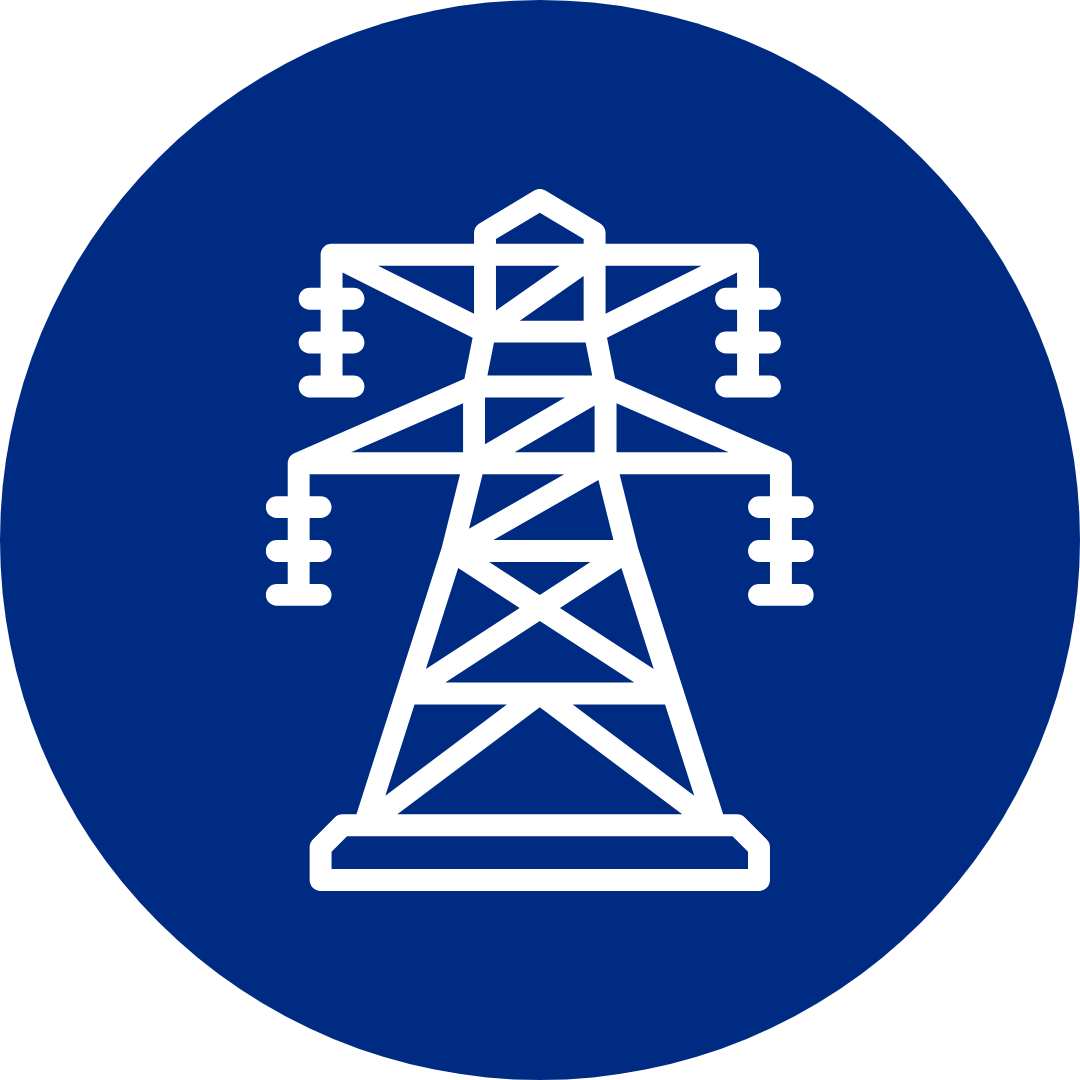Choosing the correct armoured cable size for an EV charger is important for both safety and efficient charging. Most home EV chargers need a 6mm or 10mm steel wire armoured cable, but the exact size depends on your charger's power rating and the length of the cable run. Using a cable that is too small can cause overheating and reduced charging speed, while an oversized cable may be more costly than needed.
Many households in the UK use a 7kW charger, which is best matched with a 6mm or 10mm cable, especially if the cable run is longer than 10 metres. Other key factors include the charger's amperage, the distance from the consumer unit, and following local electrical safety guidelines. Picking the right cable ensures future upgrades and safe operation.
Key Takeaways
Correct cable size ensures safe and reliable EV charging.
Consider charger size, cable length, and UK rules before installing.
Using the right armoured cable prevents hazards and extra costs.
Why Picking The Right Cable Size Matters For Your EV Charger
Choosing the correct armoured cable size is essential for safe and efficient electric vehicle charging. When the cable is too small, it can overheat. This overheating could lead to power loss or, in serious cases, electrical hazards.
Proper cable size helps by:
Safely carrying the electrical load required by the charger
Reducing risk of overheating or fires
Making sure the charger delivers energy quickly and reliably
Electric vehicles and plug-in hybrids require a stable supply of electricity, especially when charging at home or at public charging points. An undersized cable may not provide enough power for higher capacity chargers, such as those rated at 7kW or 22kW.
Key factors that affect cable size include:
Charger power (in kW)
Length of cable needed between the charger and electrical panel
The voltage used by the system (often 240V in homes)
Maximum current expected (measured in amps)
Using a correctly sized cable also prevents energy loss because thicker cables reduce voltage drop, especially over longer distances. If someone plans to upgrade their charger later, or install more public charging points, choosing a larger cable during the first installation can save time and money.
Overall electrical safety and good charging performance both depend on getting the cable size right. This ensures the electric car, plug-in hybrid, and the whole property stay protected during every charging session.
EV Charger Power Ratings And Their Cable Needs
EV chargers come with different power ratings. The most common home charging stations supply either 3.6kW, 7kW, or 22kW. Each rating affects how much current flows through the EV charging cable and what size armoured cable is best.
A 3.6kW charge point usually needs around 16 amps. A 7kW charge point needs about 32 amps. For a 22kW unit, it is around 32 amps per phase (three-phase supply). Most homes in the UK use single-phase supply.
The length of the cable run also matters. A longer cable needs to be thicker to prevent voltage drop, which can slow charging speed or affect safety. Both tethered chargers (with a fixed EV charger cable) and untethered chargers (where the cable can be detached) face these considerations.
Here is a simple guide for single-phase supplies:
Charger Power | Typical Current | Minimum Armoured Cable Size* |
3.6kW | 16A | 2.5mm² |
7kW | 32A | 6mm² |
22kW (single-phase use)** | 32A | 10mm² or more |
*Cable sizes may vary by installation length and method.
**Most homes do not support 22kW unless three-phase is available.
It is important to match the armoured cable to both the charger rating and the total distance to the charging station. Always check regulations and ask a qualified electrician before choosing cable size for EVs and home charging stations.
Finding The Right Armoured Cable At Cable‑World
Choosing the right armoured cable is vital for a safe and reliable EV charger setup. Cable‑World provides a wide range of armoured cables designed for different EV charger types and power requirements.
A certified electrician should always make the final selection since they will consider important factors such as charger capacity (kW), cable run distance, voltage (typically 230–240 V), and current rating (A). These factors help prevent overheating and ensure the system is both safe and efficient.
Here are some key points to check when selecting armoured cable:
Charger size (kW and A)
Distance from supply (metres)
Installation route (indoor, outdoor, or underground)
Potential for future upgrades
A quick reference table to illustrate common cable sizes for home EV chargers (guidance only):
Charger Size | Typical Current | Approx. Cable Size Needed |
3.6 kW | ~16 A | 2.5 mm²–4 mm² |
7.2 kW | ~32 A | 6 mm² |
11 kW | ~48 A | 10 mm² |
Note: Always check with a professional. Cable sizing may change due to length, installation type, or specific charger models.
Professional installation is essential to ensure cable routing, fixing, and earthing all meet UK safety standards. Using the correct armoured cable type, such as Steel Wire Armoured (SWA), also provides protection if the cable runs underground or outdoors.
Cable‑World offers support and guides to help users and electricians choose suitable cables for each project, making selection clearer and reducing the risk of errors.
Cable Size Chart For Common Home Chargers (3.6 kW, 7 kW, 11 kW)
When selecting the right armoured cable for a home EV charger, it’s vital to match the cable’s capacity to the charger's power and current draw. The most common home chargers are rated at 3.6 kW, 7 kW, and 11 kW.
Cable size is usually measured in square millimetres (mm²). These sizes help prevent overheating and voltage drop, especially over longer cable runs.
Here’s a quick guide in table form:
Charger Power | Current Draw (Approx.) | Recommended Cable Size* |
3.6 kW | 16 A | 2.5 mm² or 4 mm² |
7 kW | 32 A | 6 mm² or 10 mm² |
11 kW | 48 A | 10 mm² or 16 mm² |
*Cable size can depend on length and installation method. For a 7 kW charger, 6 mm² armoured cable is common for short runs, but it’s safer to use 10 mm² for longer distances.
Many installers recommend using a slightly larger cable size than needed. This helps future-proof the installation if the charger is upgraded later.
6 mm² armoured cable is often used for 7 kW home chargers, but always check the total run length and consult local regulations.
Selecting the right size helps ensure safe, reliable charging and reduces the risk of cable overheating. Always follow manufacturer and electrical safety guidelines.
How Cable Length Affects Your Choice
Cable length plays a major role in choosing the right size armoured cable for an EV charger. A longer cable run increases the risk of voltage drop, which can affect how efficiently the charger works.
Voltage drop happens when electricity travels long distances. As the cable gets longer, resistance inside the wire builds up. This can reduce the amount of voltage reaching the charger and slow down charging.
For most UK home chargers running at 240V, installers aim to keep voltage drop under 3%. If the cable run is especially long, a thicker cable may be needed to stay within safe limits.
Common factors to consider:
Total cable run (length) between the consumer unit and charge point
Charger’s power rating (kW or amps)
Allowable voltage drop (usually up to 3%)
Type of armoured cable (for example, SWA)
Approx. Cable Length (metres) | Suggested Minimum Cable Size for 7kW (32A) Charger* |
up to 10 | 6mm² |
10 to 25 | 10mm² |
Over 25 | 16mm² |
*These sizes are general guides. The exact size may change depending on installation factors, regulations, and advice from an electrician.
If in doubt, always choose a slightly larger cable size to account for longer runs or future upgrades. This helps reduce voltage drop and keeps charging safe and reliable.
Essential Safety Rules And UK Regulations
Electric vehicle charger installations in the UK must follow strict safety rules to prevent electrical hazards. The main standard is BS 7671, known as the IET Wiring Regulations.
All EV chargers need a dedicated circuit from the consumer unit. This helps prevent overloading and keeps the system safe.
Key Safety Features:
Armoured cable is required to protect against physical damage.
A circuit breaker sized correctly for the charger’s load must be included.
An RCD (Residual Current Device) is mandatory to guard against electric shocks.
According to UK regulations, the installation must comply with Approved Document S and manufacturer guidelines. Only qualified electricians should fit EV charger cables and units.
Important areas covered by regulations:
Safety Standard | Description |
BS 7671 | Sets wiring and installation requirements |
RCD | Protects against earth faults & shocks |
Circuit Breaker | Stops overloads & short circuits |
Consumer Unit | Main distribution board for the property |
Installers must assess the site for risks. All parts, including cables and protection devices, must meet minimum UK safety standards to ensure reliable operation. Regular inspection and testing are highly recommended after installation.
Frequently Asked Questions
what size armoured cable for ev charger?
For most home EV chargers, 6mm² or 10mm² armoured cable is commonly used. The best size depends on the length of the run and the charger's power rating. Short runs for a 7kW charger usually need 6mm² SWA, but longer distances may require 10mm² to keep voltage drop within safe limits.
What size armoured cable do I need for an EV charger?
The size depends mainly on the charger's kilowatt rating and how far the cable will run from the fuse board to the charger. For a 7kW charger, 6mm² is suitable for most installations up to about 15-20 metres. For longer distances, or higher power chargers, 10mm² is safer.
What wire should I use for an EV charger?
Steel wire armoured (SWA) cable is recommended for outdoor EV installations because it is strong and weatherproof. For indoor setups, a standard PVC twin and earth cable may be allowed, but SWA is often preferred due to its extra protection.
What size breaker do I need for a 7kW car charger?
A 7kW charger normally needs a 32A circuit breaker. The breaker protects the wiring and the charger from electrical overload. Always choose a breaker that matches the current draw of the device and meets local regulations.
Is 32A or 40A MCB for EV charger?
Most 7kW EV chargers work with a 32A MCB (miniature circuit breaker). A 40A MCB is generally not needed unless the charger is rated at a higher power or if there are unique installation requirements.
What size cable for 7.4 kW EV charger?
A 7.4kW EV charger requires a cable that can safely carry around 32A. Usually, a 6mm² armoured cable is sufficient for short runs. If the cable needs to run a long distance, consider using 10mm² to avoid voltage drop.
How many amps does a 7kW EV charger pull?
A 7kW EV charger draws about 32 amps when running at full capacity. This is for a single-phase supply, which is standard in UK homes. The current may be slightly higher if the voltage supply at a property is lower than the standard 230V.
Alarm Cable
Arctic Grade Cable
Armoured Cable
Audio & Speaker Cable
Auto Cable
Bare Copper
Belden Equivalent Cable
Co-axial Cable
Data Cable
DC Telecom Cable
Defence Standard Cable
Emergency Lighting & Fire Detection Cable
EV Cable
Festoon
![Loose Tube Fibre Cross Section]()
Fixed Wiring PVC & LSOH Cable
Flatform
Flexible Control Cable
Flexible PVC Cable
Flexible Rubber Cable
General Wiring Cable PVC & LSOH
High Temperature Cable
High Voltage Cable
![5308 p1 t2 cat Cross Section]()
LSOH Flexible Cable
Medium Voltage Cable
NYY & N2XH Cable
Protected Wiring Cable
Silicone Cable
Solar Cable
Split Concentric Cable
Spiral Cable
Temporary Power Cable
Tri-Rated Cable
Welding Cable
Alarm Cable
Arctic Grade Cable
Armoured Cable
Audio & Speaker Cable
Auto Cable
Bare Copper
Belden Equivalent Cable
Co-axial Cable
Data Cable
DC Telecom Cable
Defence Standard Cable
Emergency Lighting & Fire Detection Cable
EV Cable
Festoon
![Loose Tube Fibre Cross Section]()
Fixed Wiring PVC & LSOH Cable
Flatform
Flexible Control Cable
Flexible PVC Cable
Flexible Rubber Cable
General Wiring Cable PVC & LSOH
High Temperature Cable
High Voltage Cable
![5308 p1 t2 cat Cross Section]()
LSOH Flexible Cable
Medium Voltage Cable
NYY & N2XH Cable
PAS - BS5308 Instrumentation Cable
Protected Wiring Cable
RS-232 Cable
RS-485 Cable
Silicone Cable
Solar Cable
Split Concentric Cable
Spiral Cable
Telephone Cable
Traffic Signal Cables
Temporary Power Cable
Tri-Rated Cable
Welding Cable
Airports
Automation & Process Control
![Automotive]()
Building & Construction
Communication & Telecommunication
Data Centres
Defence
![DNO 1]()
E-Mobility
Food & Beverage
Marine & Offshore
Mining, Drilling & Tunnelling
OEMs
Oil, Gas & Petrochemical
Rail & Metro
Renewable Energy
Switchgear
Power
Water Treatment













































